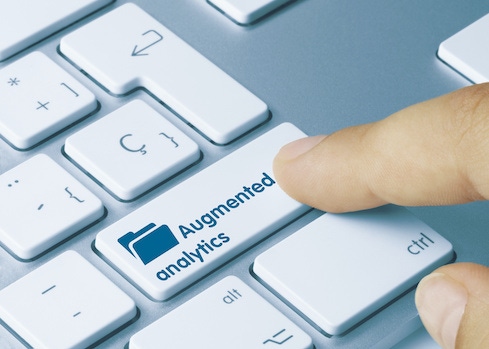Augmented Analytics Drives Next Wave of AI, Machine Learning, BI
Business intelligence will move beyond dashboards, and AI and machine learning will become easier for less skilled workers as augmented analytics are embedded into platforms.

Enterprises struggling to get their data management and machine learning practices up to speed in an era of more and more data may be in for a nice surprise. After years of bending under the weight of more data, more need for insights, and a shortage of data science talent, augmented analytics is coming to the rescue. What's more, it could also help with putting machine learning into production, something that has been an issue for many enterprises.
Identified as a major trend by Gartner at its Symposium event last year, augmented analytics has been around for several years already, according to Rita Sallam, distinguished research VP and Gartner fellow. But in recent years the concept has expanded to encompass automation of many of the processes that are required by the entire data pipeline. That includes tasks such as profiling, cataloging, storage, data management, generating insights, assisting with data science and machine learning models, and operationalization, according to Sallam, who was set to present a session about augmented analytics at the now postponed Gartner Data and Analytics Summit that has been rescheduled for September.
The trend comes in the years after business intelligence (BI) data dashboards and visualizations have become mainstream, popularized by vendors such as Tableau and Qlik. These tools provided a way for users to look at data and drill down into the information they needed to figure out what actions to take next, what areas required more focus, and how they could be more productive. Now nearly every BI vendor has this capability, Sallam told InformationWeek, and Microsoft has taken it further, offering it at a very low cost, further disrupting the market.
That's about to evolve even more as vendors look to differentiate and solve another problem that users have.
"Data is increasingly large and complex. The variables that we need to explore and the different levels of aggregation that we need to explore is just far greater than a human brain can do," Sallam said. As good as KPI dashboards and visualizations are, they do require a level of skill to be able to drill down and understand what the causes are and what are the best next actions to take.
Now tools are evolving further to make the whole process easier for users. Big vendors are making acquisitions to add data prep and automation into their platforms. For instance, Data Robot acquiring Paxata, and Tableau acquiring Empirical Systems. Microsoft's Power BI, Qlik, and other vendors have also added augmented analytics features to their platforms, too.
These additions will save enterprise customers the effort of finding such tools themselves. That's because the features are being added into the platforms and tools that they already own, as they begin to upgrade, according to Sallam.
Organizations will start seeing these capabilities in three different ways.
The first is the evolution of the dashboard. For instance, as one of the pioneers of the dashboard and visualizations, Tableau is innovating to add these features into the familiar dashboards they already know well. Now, instead of exploring around a particular KPI, users can now use the Explain feature, for example, which will generate all the patterns in the data that relate to a change in the KPIs.
The second way is coming from companies that aren't dashboard centric. Instead of dashboards, these companies are generating dynamic "data stories." These can look a lot like a Twitter or Facebook feed, and provide the user with details about what is happening, why it is happening, and what they should do about it.
A third way is for insights to be embedded directly in applications that you are already using, such as Salesforce or Workday.
All this is adding up to a number of new ways for enterprises to get the benefits of augmented analytics without going out to acquire the tech themselves.
"The leading vendors are adding augmented analytics features and complementing that with natural language query and with natural language explanations and even the beginning of business monitoring for anomalies," Sallam said. "You are starting to see those features make their way into the incumbent vendors."
The benefits of this wave of augmented analytics could extend beyond business intelligence, too. While enthusiasm about implementing AI in the enterprise was pretty high at the beginning, it turns out that converting those carefully incubated, well-funded pilots into scaled enterprise production was a lot harder to do. By adding automation to parts like data management and data pipelines, augmented analytics can be part of the solution to getting AI into enterprise production. Sallam said that augmented analytics will definitely help expert data scientists to be more productive and also make it possible for less skilled worker to have access to augmented tools to build models themselves.
As for operationalizing models, that will require more skill and will also require enterprise-grade platforms.
"That set of capabilities we see evolving in data science and machine learning platforms," Sallam said.
Read more of our articles on augmented analytics and other emerging areas:
10 Data and Analytics Trends for 2020
About the Author(s)
You May Also Like







